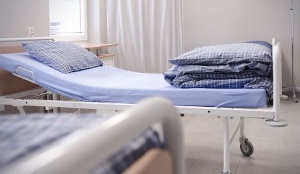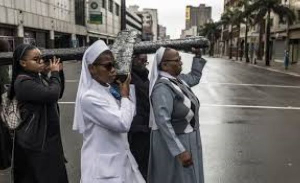The Tema Regional Government Hospital, according to The National Tribute investigations, is in dire need of equipment and other essential resources and if immediate action is not taken by the government, the only regional hospital will bleed to death.
The hospital, which is the major health facility serving about three municipal assemblies including Tema Metropolis, records a monthly average of 100 major accident cases yet its emergency center is, most of the time, dysfunctional, a source within the hospital told this paper on condition of anonymity.
The source said the absence of a well-equipped emergency unit with modern facilities to handle most critical cases is seriously hampering the effective delivery of emergency care to victims, who are put in same wards with other patients.
The situation of the 294-bed capacity hospital, situated in a highly industrial city close to three major highways, namely Accra-Tema, Tema-Aflao and Tema-Akosombo roads is heart breaking.
The facility is a major referral health centre for private and government facilities in the Tema Metropolis, Ashaiman Municipality including the catchment area extending to Afienya, Dawhenya and Prampram in the Dangme East and West districts. It also receives referral cases from the Sogakope and Battor Catholic hospitals in the Volta Region.
The Bully Nurses A visit to the dilapidating facility by the paper only saw scattered units with no central point, a make-shift surgical theatre where women in labour who need to undergo caesarean section are operated upon simultaneously with other patients undergoing other surgical procedures.
Pregnant women in labour receive very little attention from the nurses available with the claims that doctors were busy taking care of other patients and could, at the same time, even attend to most critical cases.
The paper's observations revealed that some pregnant women in labour were force to give still-birth or die in the process with nurses raining insults on suffering patients. Patients were seen in the regional hospital seeking treatment but sleeping on wooden benches and on the bare floor.
Such situations, including wailing women in labour pacing the corridors, while others cup their chins in their palms in deep thought, are enough to give you goose pimples.
Many patients who traveled from many communities to have medical care holding the National Health Insurance Cards are treated like criminals in the facility by nurses who seem not to be aware of the code of ethics guiding their profession.
Such patients will have to submit to the bully nurses before they give them medical assistance since they lack the financial capacity to seek care at private facilities.
"If I have money to be delivered of my baby at a private facility, why would I come and queue here with other pregnant women who equally have no beds to lie on, but are made to endure labour pains sitting on chairs overnight? A weeping pregnant woman in labour told this paper on Monday night.
She said for her three-day-stay at the facility, she had seen about three women giving still-birth because nurses simply did not care about their situation and kept shouting on them.
"I have been scheduled to undergo caesarean delivery but I have been waiting since last night since the delivery theatre was occupied, and I am experiencing severe back pain coupled with the labour pains," she said amid tears. The congestion at the Department of Obstetrics and Gynaecology , in most cases, seen women with serious health complications who are made to wait for long hours before they are sent to the theatre.
In most cases, about four to five women are made to share a single bed with the new-borns, a situation which could have health implications for the children and their mothers.
Infrastructure It is public knowledge that infrastructure at the facility is poor, since the entire hospital could be described as being housed in a make-shift structure which was handed over to the Ghanaian government in 1967 by Sir William Halcrow and Partners who developed the Tema Port.
The company used the facility as a clinic for the treatment of injured construction workers and engineers who worked on the habour project from 1954-1967.
The facility has 21 various units. Notable among them are the internal medicine and intensive care unit, general surgery, physiotherapy, specialist clinics such as sickle cell, diabetic, among others.
It has 40 doctors, 49 house officers, 430 nurses, interns and other general staff. The facility recorded an outpatient (OPD) attendance of 106,101 in 2015.
Some 7,000 deliveries and 2,035 caesarean sections were also performed in the year under review, with some 41 maternal deaths also being recorded.
Lack of facilities at the hospital means that some cases that could be operated on at the facility had to be referred to the Korle Bu Teaching Hospital and other equally congested facilities.
Rehabilitation projects commenced at the hospital in 2007 for the general theatre and other departments but these have not seen the light of day, leaving the structures at the mercy of the weather, with the roofing sheets posing danger to patients and patrons of the hospital.
The maternity block, which was awarded on contract some seven years ago, has also been abandoned. The infrastructure challenges have led to unnecessary deaths being recorded at the facility.
Opinions of Wednesday, 13 July 2016
Columnist: Addotey wnson















